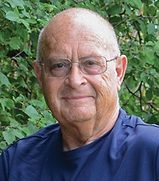Batteries with a higher energy density can be expected to provide electricity over a longer period of time at the same current draw as a battery of lower energy density – adding valuable range to electric vehicles. Or, the higher energy density battery design can be produced in a smaller, lighter package to provide the same electrical output and range. Either way, higher energy density means more efficiently stored potential electrical energy – the goal of nearly every engineer working on electric vehicles or machines.
The Texas sodium battery research continues, and automotive design publications and blogs herald almost weekly reports of breakthroughs in battery development. Still, reports from the UK are pointing to research on an aluminum/air (Al/air) battery that could supplement, or compete with, today’s reliance on Li-ion batteries.
Al/air batteries are actually fuel cells which generate electricity when aluminum is dipped in an electrolyte and then exposed to air where the reaction causes electron flow. Early examples of such batteries were economically impractical because they required expensive pure aluminum and highly caustic electrolytes necessary for a suitable reaction. Also, Al/air batteries are difficult to recharge.
British engineer Trevor Jackson, however, says he’s developed an Al/air battery which uses a much safer electrolyte, requires less refined aluminum, and once spent, the electrolyte can be processed to reclaim aluminum for future use.
Jackson’s early career included engineering work at Rolls Royce and British Aerospace, and a hitch in the Royal Navy tending nuclear reactors on submarines. After that, he launched his own laboratory to develop Al/air technology. Today, after 20 years, he’s convinced the Al/air battery can be a game changer in the electric vehicle and heavy machinery industries.
Jackson says metal/air batteries were developed in the 1960s, and millions of hearing-impaired people depend upon them daily to power their hearing aids. Similarly zinc/air technology is used in many solar installations, he says.
Al/air batteries have roughly eight times the energy density of Li-ion batteries, and boast significant cost savings derived from the fact aluminum is much cheaper to produce than lithium and exists as one of the most abundant minerals in the earth’s surface. Their downside to date, however, has been the inability to recharge them efficiently.
Jackson says he’s developed an electrolyte that solves the self-destructive habits of current Al/air batteries, and is quoted in published reports and on-line engineering and design blogs as saying he is not afraid to drink it. He also says if a Tesla Model S was equipped with one of his batteries of the same size as the Li-ion battery currently powering the car, it would have a 1,500 mile range rather than the existing 370 mile rating.
“If the Tesla had an Al/air battery of the same weight as its Li-ion battery, it would run for 2,700 miles on a single charge,” he says.
While Jackson’s improved electrolyte development solves some of the problems that plague larger Al/air batteries, challenges remain to efficiently recharge aluminum batteries.
Distilled water and minerals such as sodium-chloride (table salt) have been used successfully to reduce hazards of caustic solutions used in Al/air batteries, and those solutions can be processed to reclaim the reacted aluminum that exists when the batteries are discharged.
Jackson says he hopes the technology can be used to improve range for vehicles or machines in construction and agriculture and when they are spent, they could be swapped out in a direct-exchange program.
One 2013 project in Israel saw Al/air batteries used as a reserve for an automotive Li-ion battery pack with a 100 mile range. The Al/air backup battery was able to power the vehicle for another 1,000 miles.
Jackson says he envisions a swap system that would take less than two minutes to replace spent battery packs in automotive use. Also, he says throughout the life of an automotive Al/air battery, its electrolyte can be replenished with periodic “fill ups” of distilled water.







